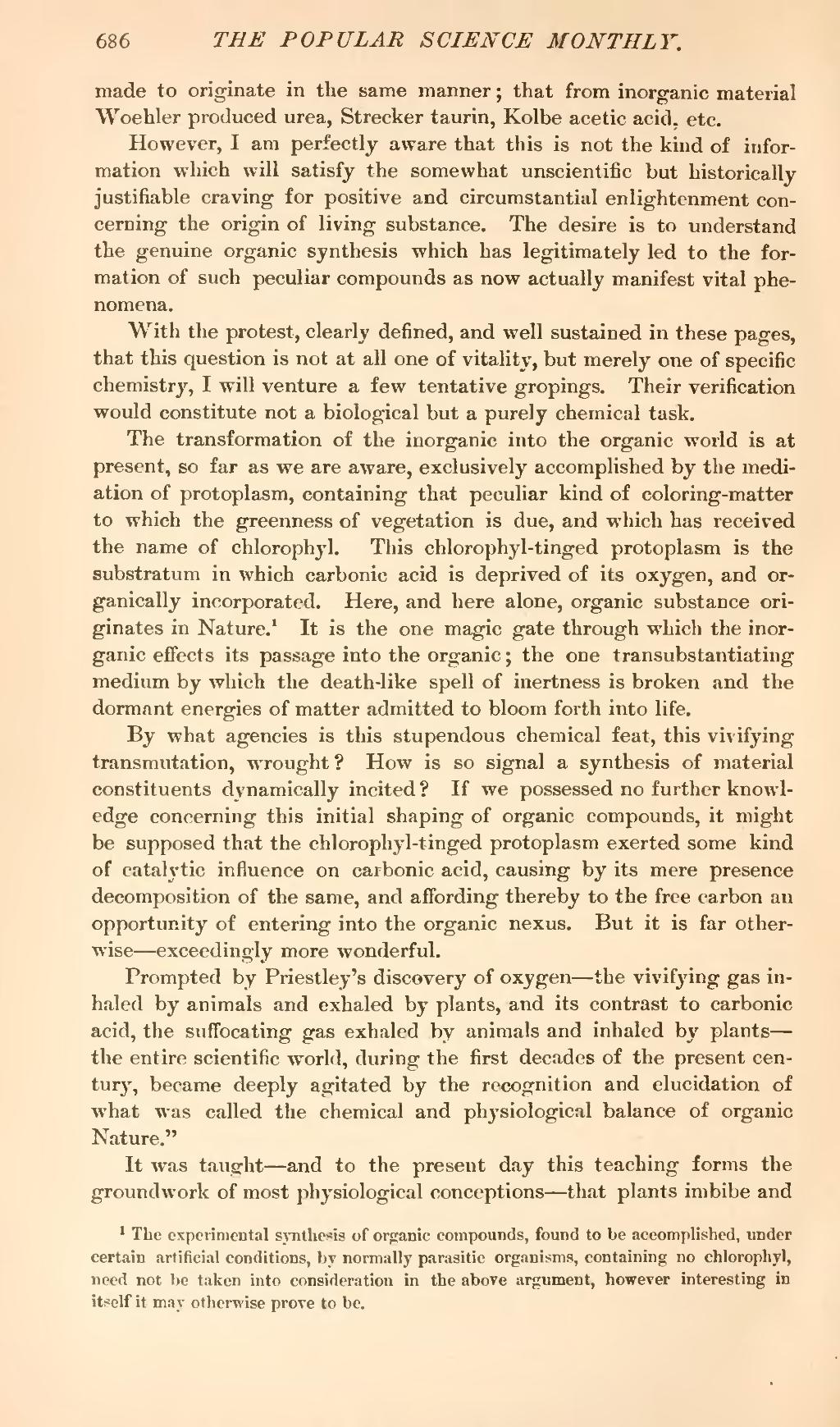made to originate in the same manner; that from inorganic material Woehler produced urea, Strecker taurin, Kolbe acetic acid. etc.
However, I am perfectly aware that this is not the kind of information which will satisfy the somewhat unscientific but historically justifiable craving for positive and circumstantial enlightenment concerning the origin of living substance. The desire is to understand the genuine organic synthesis which has legitimately led to the formation of such peculiar compounds as now actually manifest vital phenomena.
With the protest, clearly defined, and well sustained in these pages, that this question is not at all one of vitality, but merely one of specific chemistry, I will venture a few tentative gropings. Their verification would constitute not a biological but a purely chemical task.
The transformation of the inorganic into the organic world is at present, so far as we are aware, exclusively accomplished by the mediation of protoplasm, containing that peculiar kind of coloring-matter to which the greenness of vegetation is due, and which has received the name of chlorophyl. This chlorophyl-tinged protoplasm is the substratum in which carbonic acid is deprived of its oxygen, and organically incorporated. Here, and here alone, organic substance originates in Nature.[1] It is the one magic gate through which the inorganic effects its passage into the organic; the one transubstantiating medium by which the death-like spell of inertness is broken and the dormant energies of matter admitted to bloom forth into life.
By what agencies is this stupendous chemical feat, this vivifying transmutation, wrought? How is so signal a synthesis of material constituents dynamically incited? If we possessed no further knowledge concerning this initial shaping of organic compounds, it might be supposed that the chlorophyl-tinged protoplasm exerted some kind of catalytic influence on carbonic acid, causing by its mere presence decomposition of the same, and affording thereby to the free carbon an opportunity of entering into the organic nexus. But it is far otherwise—exceedingly more wonderful.
Prompted by Priestley's discovery of oxygen—the vivifying gas inhaled by animals and exhaled by plants, and its contrast to carbonic acid, the suffocating gas exhaled by animals and inhaled by plants—the entire scientific world, during the first decades of the present century, became deeply agitated by the recognition and elucidation of what was called the chemical and physiological balance of organic Nature."
It was taught—and to the present day this teaching forms the groundwork of most physiological conceptions—that plants imbibe and
- ↑ The experimental synthesis of organic compounds, found to be accomplished, under certain artificial conditions, by normally parasitic organisms, containing no chlorophyl, need not be taken into consideration in the above argument, however interesting in itself it may otherwise prove to be.
